Disclaimer: This website contains affiliate links, from which Heritage Acres Market LLC may receive a small commission from the vendor on the sales of certain items, all at no cost to you. Please read our full disclosure for more information. Thank you for supporting Heritage Acres Market LLC!
The Buff Orpington is a delightful chicken perfect for children or beginners. A favorite among backyard chicken keepers, these large dual-purpose breeds are excellent egg layers while being equally suitable for the table. Quick to mature, hardy, and friendly, they are easy to keep and fun to have around.
Is the Buff Orpington right for your flock?
A relatively new chicken breed, the Buff Orpington has established itself as a favorite for backyard chicken keepers for several reasons.
- A large, dual-purpose breed
- Easy to care for
- Docile with a kind temperament
- Great for children and beginner-friendly
- Cold hardy
- A time tested Heritage breed
- An excellent layer of large brown eggs
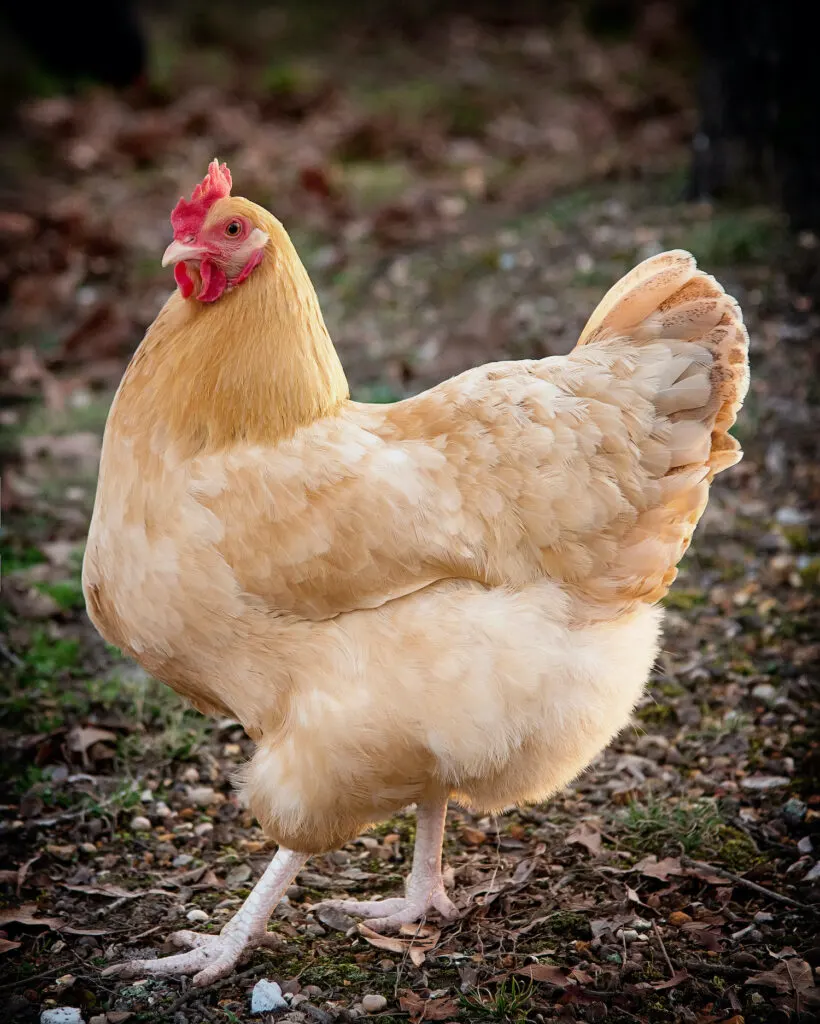
Table of Contents
Background & History of The Breed
There was a tremendous public interest in chickens during the early 1800s, known as “Hen Fever.” It swept many English-speaking nations, and any new or unusual breeds of chicken were keenly encouraged. As the fashion passed, a general interest in poultry continued, but rather than looking for exotic species, a desire for utility birds became more prevalent.
Dual-purpose chickens that could provide high-quality meat and lay plenty of eggs were now required. A new interest in creating birds of this type became the principal focus of breeders in America.
Although the versatility of the American dual-purpose birds was admired in the United Kingdom, they did not become popular. This was due to their yellow skin, as the preference there was for white-skinned chickens.
However, an English man named William Cook began to develop a British bird that had the same qualities as the American ones. His aim, to produce a hardy fast-growing chicken that had white skin, was good for the table and laid abundantly.
Hen fever had meant that many exotic breeds had been imported from as far away as India and China. Unsurprisingly these birds didn’t fare so well in the English climate, nor did they have the practicality of producing a lot of eggs or meat. What they did provide was a diverse gene pool that could be used to inject new blood into some of the older chicken breeds. Cook realized this benefit and decided to use it in the creation of his own breed.
At the time, his methods of cross breeding different chicken species to create a new one were frowned upon, but today it is something that chicken breeders around the world far more routinely accept.
His new creation, a black-colored “Orpington” named after the Kent town where Cook lived, was the first to be introduced to the public in 1886. Within five years, the Orpington became a great success and started to be exported around the world.
Orpington Chickens first arrived on American soil in 1891 when Cook himself imported a large number to show to poultry farmers personally.
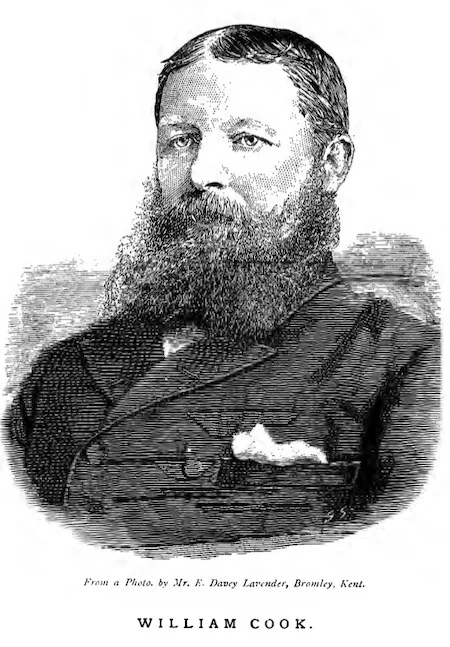
Orpington Colors
Over many years, Cook continued to improve the breed, and the results produced better quality birds and a wider range of colors and patterns. This gave Cook an idea, and he decided to create different varieties. The first was a Black Orpington, then White, Buff, Speckled (Jubilee), and Mottled (Spangled). Later with the help of his daughter and her husband A.C. Gilbert, they created the additional Orpington color patterns of Blue and Cuckoo.
The American Poultry Association recognizes only the Buff, Black, White, and Blue Orpington varieties. But many other colors exist.
Each different color of Orpington (p.15-18) was created by crossing different varieties of birds.
- Black Orpingtons – Cook crossed Black Plymouth Rock hens with Minorca roosters. He then bred their offspring to clean-legged Langshan chickens
- Buff Orpingtons – Golden Spangled Hamburgs were crossed with Buff Cochins. The offspring were crossed with dark or colored Dorkings; the progeny of this cross were bred back to Buff Cochins and produced the Buff Orpington. However, some controversy surrounds this as the Lincolnshire Buff is suggested as being the origin of the Buff Orpington chicken.
- White Orpingtons – Mr. Cook claimed to have originated the white variety by crossing White Leghorn males with Black Hamburg pullets. The pullets from this cross that came white were mated to White Dorking males. This breed has seen continual improvement in the United States
- Blue Orpingtons – These come from crosses between black and white Orpingtons
- Jubilee Orpington – William Cook said: “The Jubilee Orpingtons were produced by mating the same breeds together as were used in the Buff Orpingtons, only a Speckled Dorking was used instead of a colored one, this being used for the last cross.”
- Other colors with unknown origins include – Cuckoo, Ermine, Partridge, Red, Silver laced, Gold laced, Spangle, Chocolate, splash, Lavender and Lemon
Bantam Orpingtons also exist and were created in 1900 by Herman Kuhn in Germany. Although Bantams still exist, they can be hard to find.
The American Poultry Association first recognized Buff Orpington chickens in 1902. This was followed by the Black and the White in 1905 and the Blue in 1923. However, to this day, the Buff Orpington chicken remains the favorite variety in the U.S.
Although these heritage birds have spent some time on The Livestock Conservancy Priority List, they have now enjoyed a revival and were removed in 2016. Buff Orpingtons are no longer considered to be endangered.
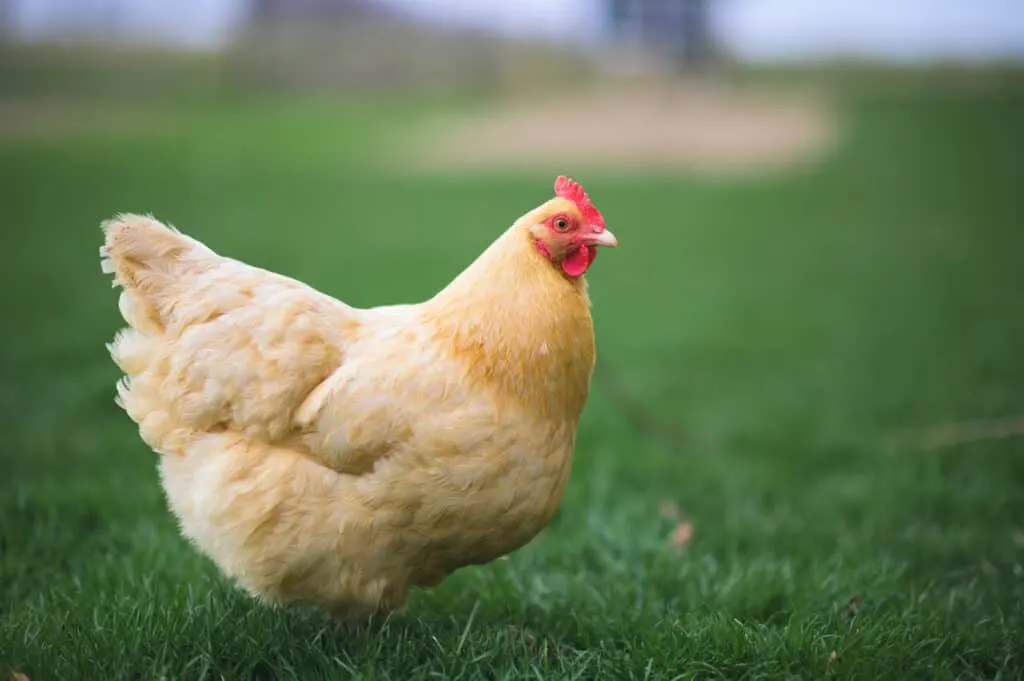
Qualities of the Buff Orpington
Buff Orpingtons have many wonderful qualities making them exceptional all round chickens.
Temperament – Orpingtons are gentle, docile birds that are easily tamed and make extraordinary pet chickens. With regular contact that builds trust and familiarity, they become affectionate and enjoy human contact. Some even become lap chickens.
They get on well with other flock members and are not known for bullying. Nor are they particularly prone to being bullied themselves due to their large size and solid stature. It is, however, recommended to keep them with other docile breeds.
Kid-friendly – Due to their excellent temperaments, docility, and friendliness, Orpingtons are a wonderful breed for children and often enjoy being petted.
Broodiness – It is common for Buff Orpington hens to go broody. They make excellent mothers.
Heat and Cold Resistance – Very hot weather can be problematic for Orpingtons due to their dense feathers, which cause them to overheat. They must have access to deep shade so they can stay cool.
They are very cold tolerant, although their comb, particularly in males, can be prone to frostbite and should be protected. A shelter is also necessary to keep them dry, as their feathers can become waterlogged, and they may chill quickly.
Space – If you have land where your Orpingtons can free-range, they forage well on pasture. If you only have a chicken coop and run setup, they also tolerate confinement well.
Beginner Friendly – Orpingtons are a good breed for beginners as they are hardy, easy to care for, and docile.
Noise Level – As with other male chickens, roosters will crow, but female Orpingtons are not noisy.
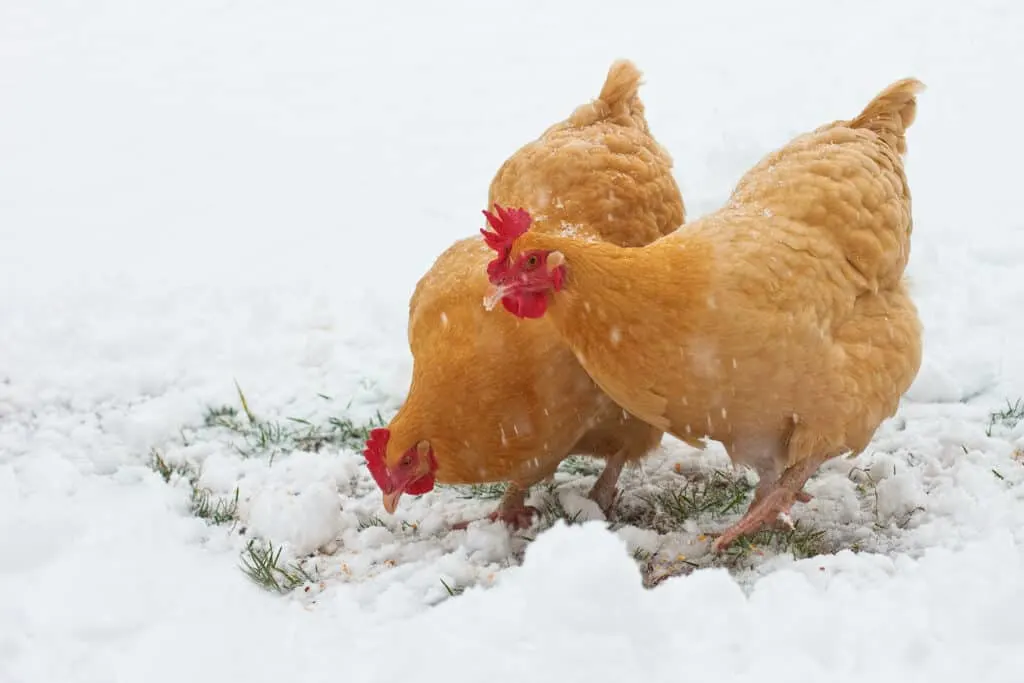
Buff Orpington Breed Specific Traits
The main traits of the Buff Orpington are its buff color plumage, fast growth rate, high egg yield, and suitability for the table as a meat bird.
Many people favor them for their friendly personalities and because heritage breeds tend to be hardier and healthier than industrial hybrids with a lifespan of 5 to 10 years.
They also exhibit more stereotypical chicken behaviors than hybrids, such as dust bathing, foraging, and good parenting.
Buff Orpingtons make excellent egg layers, producing around 200 to 280 large brown eggs per year. Young pullets will start laying between 5 and 7 months of age.
A young broiler can weigh in at 2 to 2.5 lbs in only 8 to 10 weeks. By 22 weeks, they are ready for the table as roasting chickens. An adult male weighs on average 10 lbs, while a Buff Orpington hen is approximately 8 lbs.
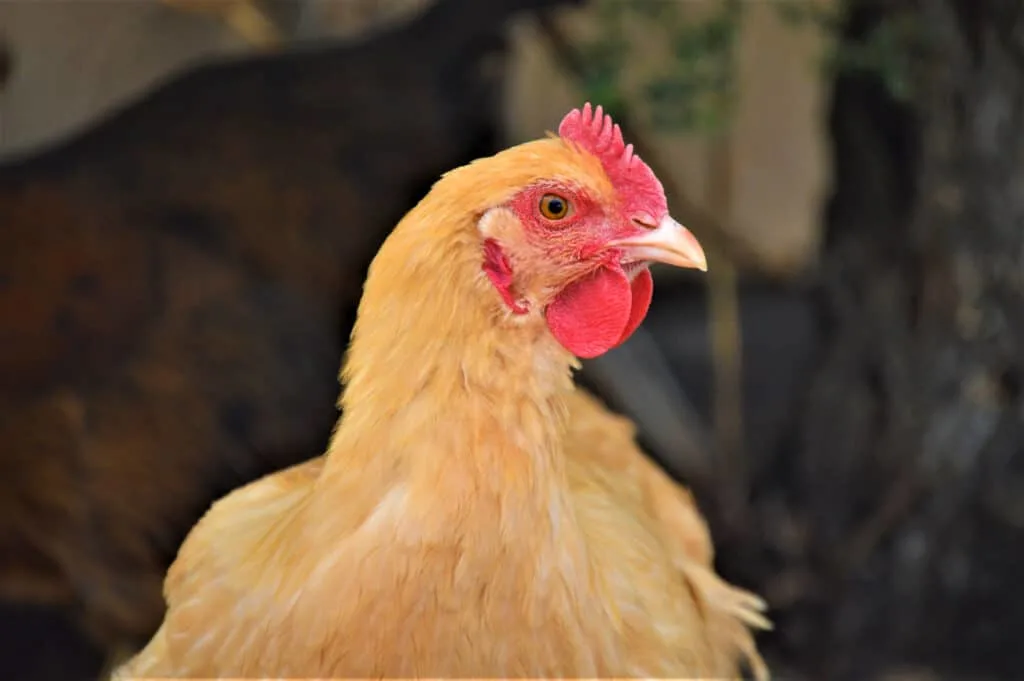
Physical Appearance of Buff Orpingtons
The Buff Orpington is a heavy bird with feathers the color of polished copper, ranging from pale to dark in tone. They have a curved, broad, short back and low stance.
Feathers -Their feathers are soft, rounded, and profuse. They lay flat to the body and hide the upper part of the legs.
Coloration – They are white-skinned. The beak is creamy pink, eyes are copper brown, and legs and toes are whitish pink.
Comb – They feature a bright red, single comb with five well-defined points. A rose combed variant also exists.
Wattles – These are bright red and of medium size with well-rounded lower edges.
Earlobes – Are smooth, of medium size, oblong in shape, and bright red.
Legs and Toes – Clean, whitish-pink, unfeathered.
Chicks – In appearance, Buff Orpington chicks are very stereotypical, being yellow with fluffy feathers. They are completely adorable perfect little puffballs but blink, and they are already sprouting their adult feathers as they grow very fast.
Roosters – Like the hens, are also known to be docile and non-aggressive. Cockerels are unique because they have been known to sit on the nest and brood for a while. They are very protective of their young.
Predators – As with other fowl, they can be susceptible to many different predators. Being heavy, almost flightless, and incredibly docile, they tend not to evade predators well and should be given as much protection as possible. They will try to defend their young.
A comparison of the American and British breed standard from the early 1900s can be seen on page 20 of the book “Standard Bred Orpingtons – Black, Buff & White.”
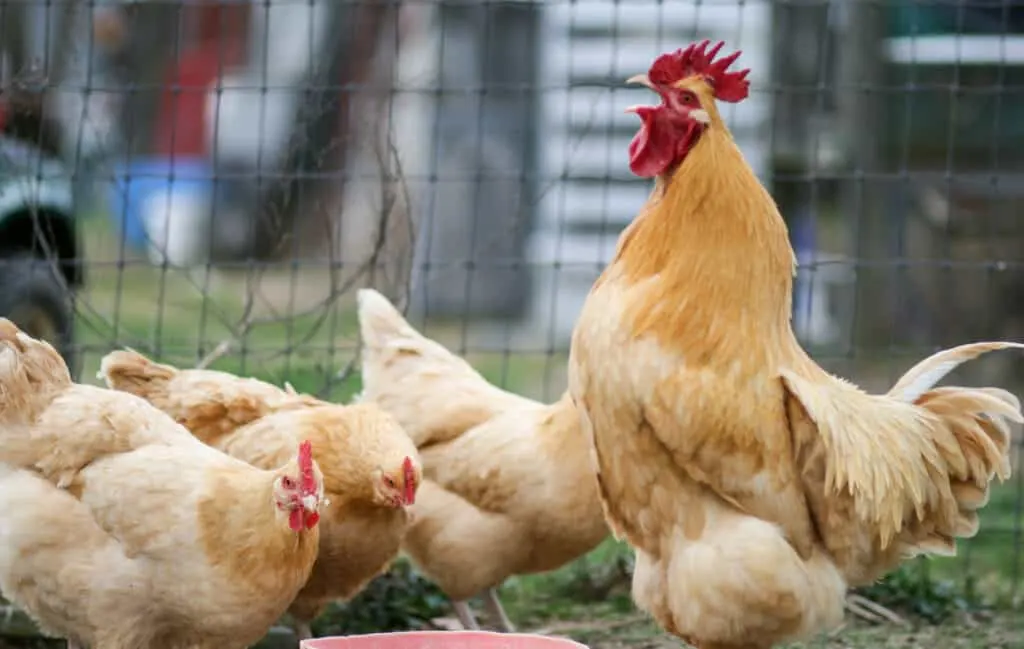
Food and Shelter
Regular commercial feeds formulated to your chicken’s requirements (egg production or meat production) are easy to buy from farm stores. You can also supplement their diet with kitchen scraps or some tasty treats like mealworms.
Orpingtons require a shelter, preferably one raised off the ground and a run to exercise. The chicken coop should be completely waterproof, insulated from heat and severe cold, and adequately ventilated.
Due to their size and weight, roosts should be a little lower than other chicken breeds, and nest boxes should also be a little wider.
Predators come from all angles, birds of prey from above while foxes will dig their way in. So when creating your chicken enclosure, ensure you protect them from these types of threats as much as possible.
Most hens are good at returning to their coop at night, but be sure all are present before shutting them in.
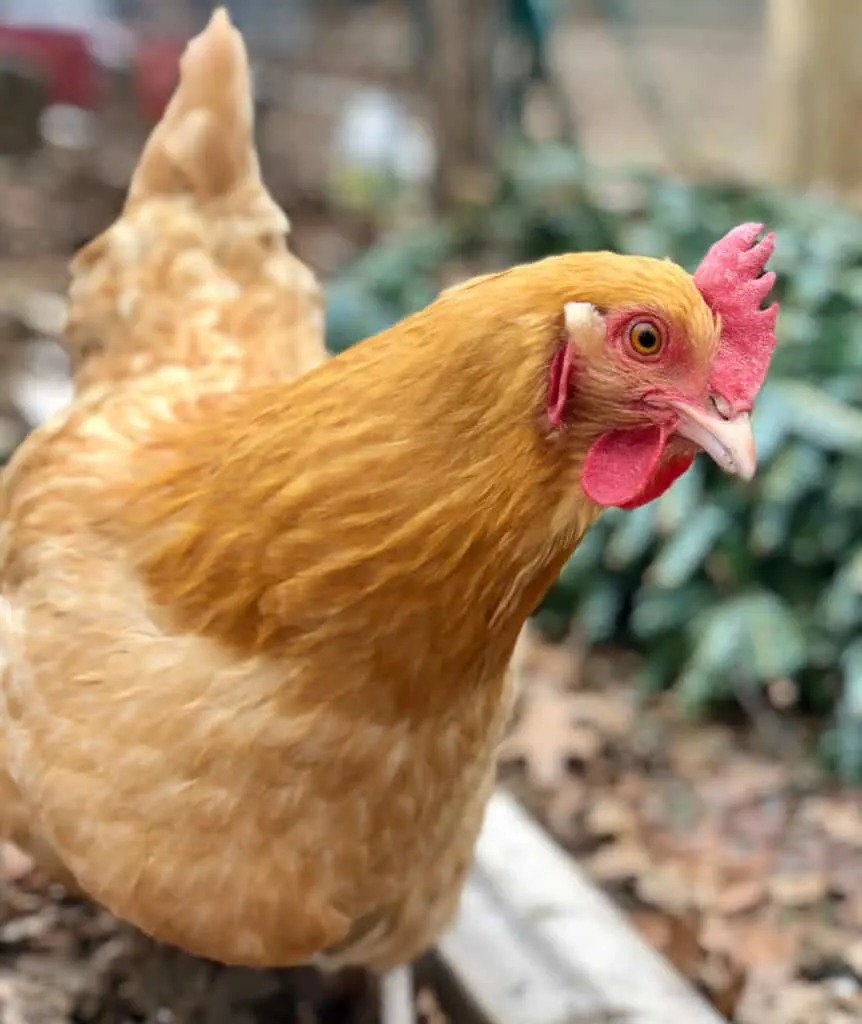
Chicken Health Concerns
Buff Orpingtons are generally hardy chickens with few health issues. As with all other chickens, they will need to be regularly treated for worms, lice, and mites and checked for conditions such as bumblefoot, spraddle leg, or an impacted crop.
Because they are densely feathered, they can get heatstroke in high temperatures. Free access to a shade that provides a cooler environment than outside is important, plus access to cool, clean water. In extreme circumstances, an electric fan can be an excellent addition to the coop.
Being heavy birds, they can be rather lazy and prone to putting on excess weight. To help keep them stay healthy, it’s a good idea to put their food and water as far apart as possible. This way, they are forced to get some exercise while going between the two.
For the same reasons, providing your birds with some homemade chicken toys can be beneficial and fun for your chickens and for you. They are very entertaining to watch!
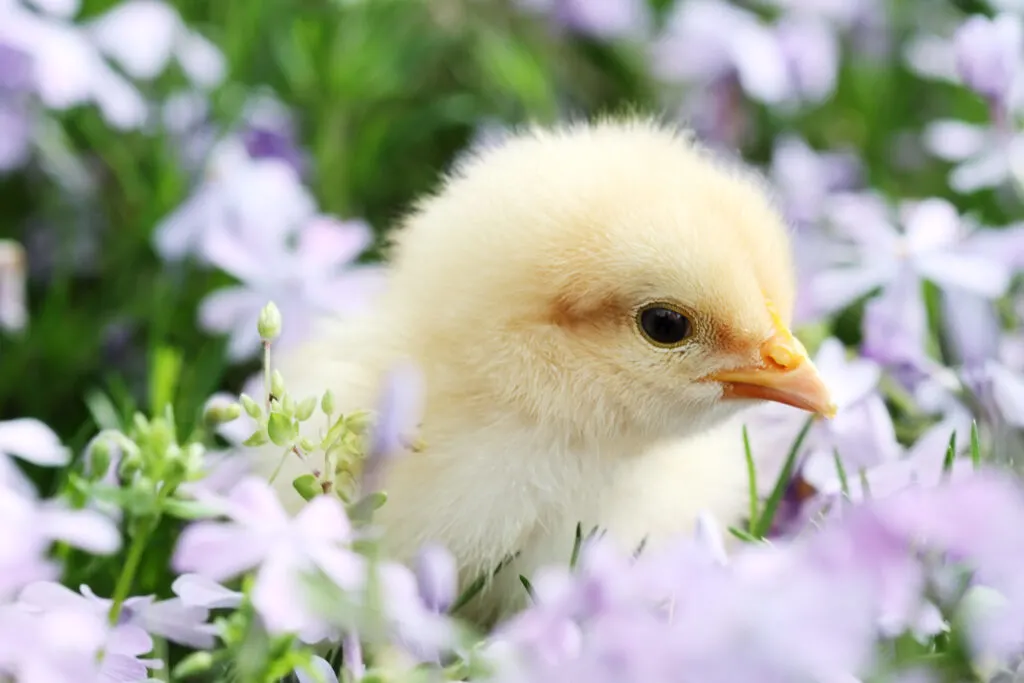
Where to Buy
There are many chicken hatcheries to be found online, or you could find someone with started or ready to lay pullets locally. Try asking other people with hens or by looking in local advertising publications.
If you decide to buy eggs to hatch out yourself, or young chicks to raise, you’ll need additional equipment. Supplies include a brooder, heat lamps, suitable housing, feeders, and waterers.
Related: Everything You Wanted To Know About Raising Chickens
It’s best to try and find a producer close to you whether you decide to buy eggs, young chicks, or pullets. If you don’t have one, consider Cackle Hatchery. Prices start at $2.85 per chick for 1 to 4 unsexed birds. This rises to $3.76 per chick for 1 to 4 females or as low as $2.25 per chick for males.
Cackle Hatchery is our preferred and recommended hatchery. While most hatcheries require orders of at least 25 chicks, you can buy as few as 3 chicks from Cackle. They are also highly rated on Google and have been in business since 1936.
Summary
If you’re looking for a large, friendly chicken suitable for children or beginners, then Buff Orpingtons are a great choice. These family-friendly birds enjoy human interaction and are easy to care for, producing plenty of eggs or meat for the table. Suited to either free-range or life in a coop, this soft cuddly bird is sure to please. If you’d like to breed your own Buff Orpingtons, they make exceptionally good mothers and protective fathers.
Should you decide to try keeping Buff Orpingtons yourself, we hope you’ll find them as adorable as we do!
Buff Orpington Highlights
| Type | Dual Purpose heavy |
| Size | Large |
| Heritage Breed | Yes |
| Average Weight | Rooster 10 lbs, Hen 8 lbs |
| Weeks To Maturity | 20 to 22 weeks |
| Average Life Span | 5 to 10 years |
| Color variations | In the U.S.A. Buff, Black, White and Blue. In other countries – as in US plus Cuckoo, Red, Ermine, Jubilee, Partridge, Silver Laced, Gold Laced, Spangle, Splash, Chocolate, Lavender and Lemon. |
| Egg Size | Large |
| Egg Color | Light brown |
| Egg Production | 200 to 260 per year |
| Dual Purpose | Yes |
| Temperament | Docile and friendly |
| Beginner Friendly | Yes |
| Kid Friendly | Yes |
| Heat Tolerant | No |
| Cold Tolerant | Yes |
| Comb Type | Single |
| Broodiness | Frequent |
| Flightiness | Not flighty |
| Noise Level | Low |
| Unique Traits | Roosters that will protect their young |

Lynda
Tuesday 5th of September 2023
My Buff hen is sweet and will take treats from my hand. However she will not let me pet her or pick her up. If I chase after her to catch her, she gets really scared and actually panics. I tried again today with the same result. Buff Orpinhtons are supposed to be for pets. Nothing has happened to her. what can I do to help her be less fearful of my touching her.
kimberly
Tuesday 27th of June 2023
How can I get them to Roost on the roosting bars?
Susan
Saturday 1st of July 2023
@kimberly, set bars lower to the ground. Mine like to roost low. They are fairly heavy birds